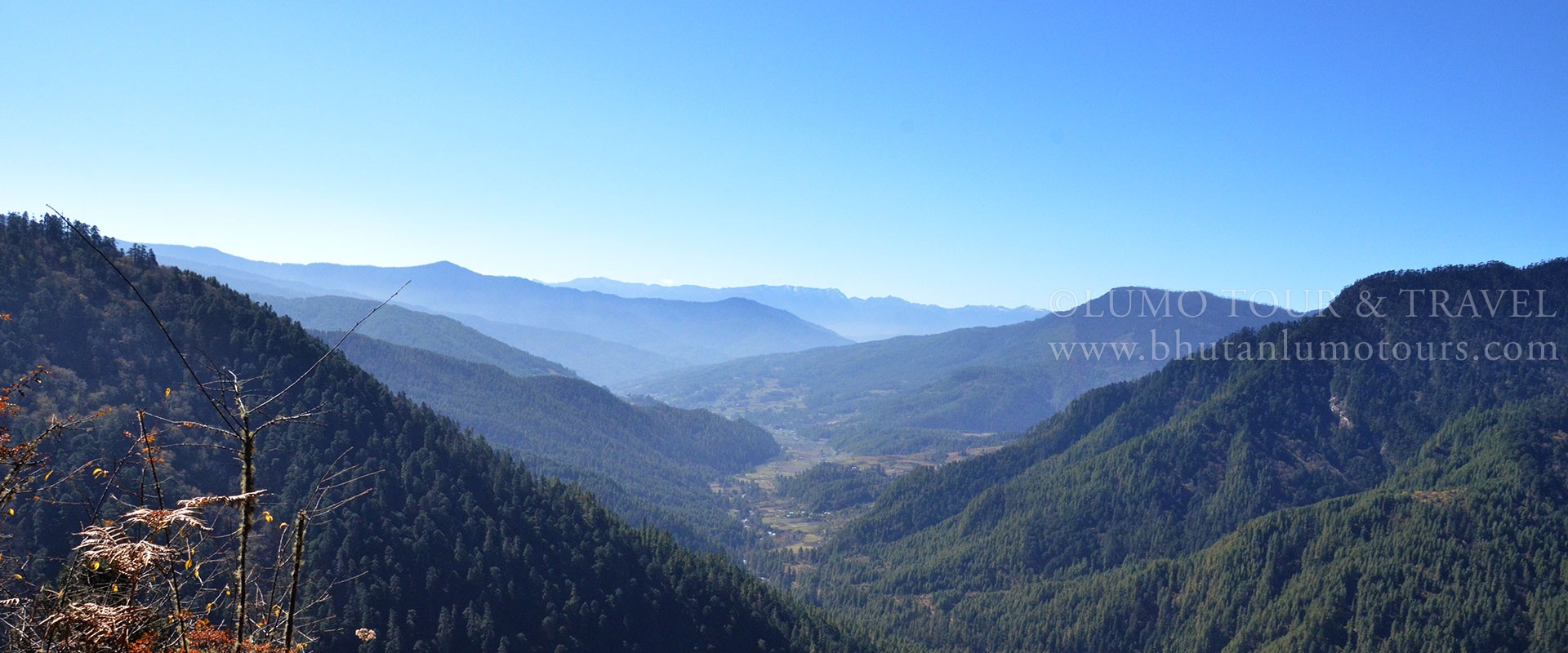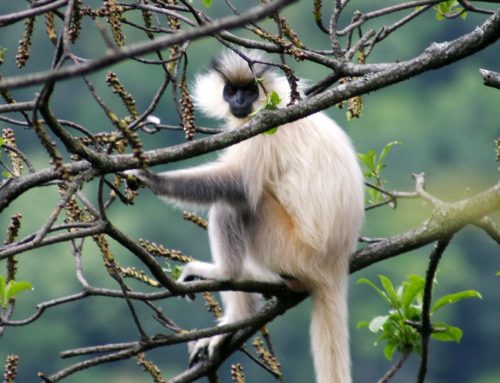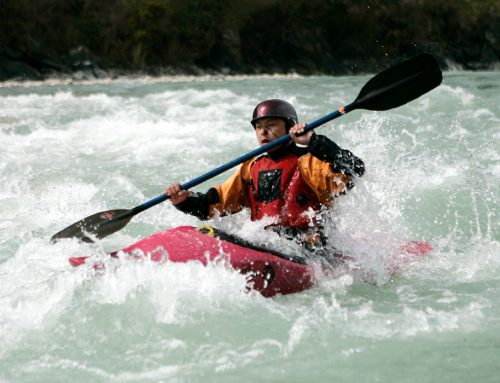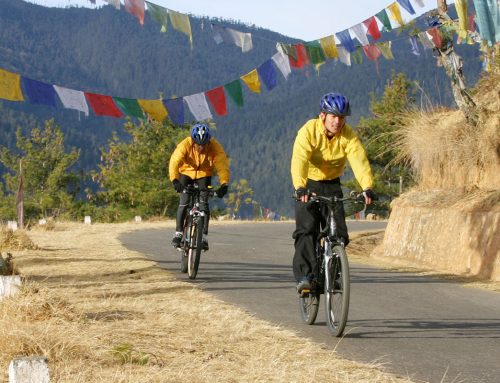In mountainous Bhutan, horses have been the most coveted form of transport. Modern roads have been built but much of Bhutan can be seen and appreciated only on horseback. We arrange horse riding at three points in Bhutan: Paro or Punakha in western Bhutan, Bumthang in central Bhutan and Trashigang in east Bhutan. The idea really is to go beyond what can be seen from the road points – apart from enjoying the ride itself, getting out there in the villages and meeting people and, along the forest and meadow trails, having picnic lunch and really getting in communion with nature.
Bhutan Interior Highlands Tour with hiking Bumthang
Highlight for this trip:
- Our company provides gho and kira for the group
- Traditional farmhouse and dinner at farmhouse with family
- Cultural show
- We arrange the traditional sport archery of Bhutan to our clients
- We have meditation room for guest in your office; we can arrange Buddhist teaching by inviting Rimpochhes
- We arrange fortuneteller master if our guest want to see their future and pass
Day 01: Bangkok/Delhi/Katmandu – Paro -Thimphu
Highlights: Spectacular views of Mt Everest (8,848 m), Kanchenjunga (8,586m) and Lhotse (8,414 m); and a literal adrenaline-pumping landing on the roof of the world.
Travel by Druk Air, Bhutan’s national airline, to Paro, the country’s only international airport. The flight is exhilarating to say the least, as the route traverses parallel to the mighty Himalayas enabling passengers to see the world’s highest peak, Mt Everest, and many more. The descent affords a panoramic view of Bhutan’s foothills culminating into a thrilling landing at what is considered one of the world’s most challenging airports.
Meet your guide at the airport and head to the hotel for lunch. Devote the afternoon to sightseeing around the Paro valley famed for its natural beauty, historical monuments, agricultural farms and quintessentially Bhutanese village communities. Visit the National Museum, formerly a watchtower, and then the Castle on a Heap of Precious Jewels or Rinpung Dzong. Wind up the day with a stroll around Paro town. Evening drive from Paro to Thimphu is just under an hour. On the way stop at the Tamchoe Monastery view and chuzom the confluence of Paro and Thimphu River. Overnight at the hotel
Day 02: A Sojourn in Thimphu
Highlights: The power centre and the capital city of the Happy Kingdom. Also the hub of commerce and culture.
There are great many places to see in Bhutan’s capital. In the morning we will drive to Buddha Point, which provides a spectacular 360-degree close-quarter view of entire Thimphu and the adjoining areas. This is the site of the world’s tallest statue of Shakyamuni Buddha. Our next destination is the Memorial chorten of Third king of Bhutan the Jigme Dorji Wangchuk, visit the 12th century Changangkha Temple, Takin Zoo and the viewpoint at Sangaygang. On our way back, we stopover at a nunnery, the Folk Heritage Museum and the Textile Museum.
After lunch, we will proceed to Tashichho Dzong, a 17th century castle-fortress which today houses the offices of the King, Chief Abbot and government ministries. We will also take the opportunity to see the nearby parliament complex, the School of Arts and Crafts, vegetable market, and then spend the rest of the day watching an archery match and strolling around the town.
Day 03: Tango and Cheri monastery hike
Morning drive 30 minute, and then hike to Tango monastery it was built in 12 century, that hold the Buddhist university in Bhutan and Cheri monastery it was built in 16 century by Zhabdrung. This both hiking is very scenic of the nature. Picnic lunch on the beautiful spot. After hike on the way back to hotel visit Pangri zampa astrologist monastery. Overnight at the hotel
Day 04: Thimphu – Punakha/Wangdi
Distance: 77 kilometres, Time: 3 hours
Highlights: A panoramic view of the snow-capped eastern Himalayas and a multitude of alpine flowers and birds; Bhutan’s ancient capital and Temple of Fertility.
The three to four-hour drive from Thimphu traverses thorough a constantly changing kaleidoscope of vegetation, waterfalls, flowers, mountains and meadows. In about 45 minutes we will reach the famous Dochula pass (3,100m) where on a clear day we can see the entire eastern Himalayan range, teeming with 6,000m to 7,554m snow-capped mountains. The pass also known for its abundant species of extremely beautiful flowers has 108 Buddhist stupas exquisitely built around a mound, adding to the natural splendor of the place.
From the pass we descend to the sub-tropical valley of Punakha. Punakha served as the ancient capital of capital and still possesses the country’s main treasures in the form of Buddhist relics. Resembling a gigantic ship on an ocean floor from afar, and girdled by two (Male and Female) rivers, the castle-fortress also represents the best specimen of Bhutanese architecture.
After lunch in a small nearby village together with a rural farming household, we will walk along a footpath flanked by an endless view of ripening paddy fields to the Temple of Fertility – Chimi Lhakhang. This temple, built in the 15th century to honour the “Divine Madman”, a saint iconoclast who is also associated with phallus worship, attracts barren couples from all over to receive fertility blessings from an anointed phallus.Night halt in Punakha
Day 05: Punakha/Wangdue – Trongsa
Distance: 120 km; Time: 6 hours
Highlights: Landscape, semi-nomads, diverse vegetation, and sighting of high altitude birds and animals enroute
Before heading for Trongsa in central Bhutan, we will visit the ruins and reconstruction work underway at Wanduephodrang, a fortress that was built in 1638 but was gutted in 2012. We take a short leisurely stroll in Wangdue town. If lucky, we might be able to sight the White-Bellied Heron cavorting on the riverbank. This is one of the rarest birds in the world.
The journey to Trongsa is a gentle climb, from the sub-tropical to the sub-alpine region with the highest point at Pelela Pass (3,300m) Consequently, we will notice the vegetation transform right before our eyes. To reach the pass, we will be skirting the periphery of the world’s largest winter habit of the exotic and the rare Black-Necked Crane. Pelela pass itself is historically significant as the boundary between eastern and western Bhutan before the country was unified. From Pelela we drop to the slightly lower valleys inhabited by the semi-nomads who live off yaks and whose lifestyles have largely resisted the forces of modernization.
After lunch at the 18th century Chendebji, a replica of the Boudanath Stupa in Nepal, we continue eastward to Trongsa proper, the bastion of the powerful governors in ancient Bhutan who eventually unified the country and became the progenitors of Bhutan’s hereditary monarchy.Night Halt in Trongsa.
Day 06: Trongsa – Bumthang
Distance: 70 km; time: 3 hours
Highlights: Trongsa palace-fortress, Black Mountain range, and local textile
We begin our day with a visit to Trongsa Dzong, the biggest palace-fortress in the Kingdom reputed to have been built without using a single iron nail. This fortress has for centuries been the vanguard of powerful warriors, one of whom even led successful expeditionary forces against British-Indian army in the southern boundaries of his domain. We complete our Trongsa sojourn with a visit to the Watch Tower, Ta dzong, which is today preserved as the Museum of Bhutanese Kings.
The drive to Bumthang is initially an upward ascent for nearly half the journey till we reach the highest point at Yotong La pass (3,400 m). After a brief stopover to view the Black Mountain range, we drive towards Chumey entering the country’s most expansive and beautiful valley known as Bumthang or a Meadow of Beautiful Vase. The women of Chumey are known for their skills in weaving the exquisite Yathra – a clothing with intricate floral patterns woven out of sheep’s wool.Night halt in Bumthang.
Day 07: Stopover in Bumthang
Highlights: Monuments and structures which bring alive the exploits of saints and kings
This is the valley of myths and legends. One of the oldest surviving man-made structures in Bhutan, a temple dedicated to Buddha Shakyamuni, Jambay Lhakhang, was built in 639 AD as part of an oath by Tibetan emperor Songsten Gampo to subdue a demoness who lay spread-eagled across the Himalayas obstructing the teachings of the Buddha. Our next visit will be the Castle of the White Bird (Jakar Dzong) whose central tower (utse) is the tallest in Bhutan. The castle currently serves as the administrative centre for the district.
From Jakar, we drive a short distance to Chakhar and then to Kurjey Lhakhag. Albeit oblivious today, Chakhar is the site of the legendary “Nine-Storied Iron Castle” built by Sindhu Raja (king) in the 8th century and the innumerable myths surrounding it. Kurjey, meaning “Body Imprint on Rock”, has temples built against a wall of cliff. The imprint belongs to the 8th century saint Padmasambhava who mediated in a rock cave and, using his tantric powers as well as guile and guise, subdued the evils who tormented the people in the vicinity.
After lunch at our hotel, we drive to Tamzhing monastery which preserves the remains of the works of Terton Pema Lingpa who, in the 15th century, discovered many secret tantric teachings hidden by Padmasambhava. Pema Lingpa was an artist and sculptor extraordinaire but, more importantly, one of the five “King Tertons” – treasure revealers – of Vajrayana Buddhism. Our last visit for the day is the “Burning Lake” in Tang where Pema Lingpa, challenged by a local warlord, took a dive into a pool with a lighted butter lamp on his head and re-emerged from the lake with the lamp intact and holding a hitherto unknown statue in his hands.Night halt in Bumthang.
Day 08: Hike around Bumthang valley
Today you have choice of hiking for three places in this valley.
Hike to the Petseling Monastery: It is located about three hours’ hiking distance above the Swiss Guesthouse on a steep incline. It offers fine panoramic views of the central Bumthang valley. You can also hike beyond the monastery across the ridge and feel the spirit of the mountains and monastery. From here return to town, ending your walk at Tamshing Lhakhang – founded in 1501 by Terton Pema Lingpa, the temple was restored at the end of the 19th century.
Visit Tharpaling Gompa,:which is located on the hillside above Bumthang. The monastery was built by a great saint called Kuenkhen Longchen Runjam and about 100 monks live there. It is about a 2-hour drive to the monastery on a rough road. From there you can continue climbing on foot above the monastery to around 3500m to 4300m and from there you will get a wonderful view of Chamkhar valley (where Bumthang town is located). From there you can walk another couple of hours down towards Lama Gomba. The walk runs along the ridge of Kikila and finally follows the traditional trek route between Trongsa and Bumthang (the Royal Heritage Trail) finishing with a wonderful view of Jakar Dzong. Here your car can meet you to take you back to the hotel.
Hike to Kunzangdrak Monastery: a tough one hour steep ascent up the hillside on the way to Tang valley leads you to one of the most important sites related to Pema Lingpa and many of his important sacred relics are located here. Khandroma Lhakhang at the back of the site is spectacularly situated against a vertical rock face that seeps holy water.Overnight at hotel
Day 09: Bumthang – Trongsa – Gantey / Phobjikha
After breakfast proceed to Gantey/Phobjikha via Trongsa about 5 hours. The approach to Phobjikha valley is through a forest of Oak and Rhododendron. Phobjikha is one of the most beautiful valleys in Bhutan and is the home to the very rare black-necked crane. The birds migrate from Tibet to Bhutan to winter here (from October -March). Visit Gangtey Gompa, one of the oldest Nyingmapa monasteries that look like a small Dzong and vist the crane centre. Walk around the villages. Overnight at the hotel
Day 10: Gangtey – Paro via wangdi
This morning drive 6hour to Paro and enroute visit Royal Botanical Park at Lamperi and lunch at the local restaurant on they way to Paro. Afternoon visit the 7th century Kyichu Temple, believed to have been built on a place that resembled a knee of a giant ogress. You can play the traditional sport he archery for an hour on the archer ground. Evening visit local farmhouse and enjoy the local dinner with family. Overnight at the hotel
Day 11: Discovering Paro Valley
Highlights: Hike to the Tiger’s Lair, the most famous Buddhist monastery in the Himalayas, built on a sheer rock face.
After breakfast, drive for half an hour and start hiking up to the temple that is renowned in the Himalayan Buddhist world as one of the most popular sites of pilgrimage. The five-hour round trip follows an ancient but oft-trodden footpath flanked by water-driven prayer wheels.
The temple, precariously perched on a hair-raising ravine about 1,000 metres above the valley floor, is considered sacrosanct as it was in a cave within this temple that the eight century tantric saint, Padmasambhava, subdued the evils who obstructed the teachings of the Buddha. The saint is believed to have come to Taktshang in a fiery wrathful form riding a tigress. Over the years, many Buddhist saints have meditated in and around the temple and discovered numerous hidden treasure teachings.
Visit the ruins of Drugyel Dzong enroute. The fortress known as the “Castle of the Victorious Drukpa”, is a symbol of Bhutan’s victory over the Tibetan invasions in the 17th and 18th centuries. We can also get a view of the sacred mountain, Jumolhari, along the way. On the way back to our hotel, we will visit the 7th century Kyichu Temple, believed to have been built on a place that resembled a knee of a giant ogress. Evening walk around the town for shopping and Cultural show at hotel.Overnight at hotel
Day 12: Paro – Bangkok/Delhi/Katmandu
After breakfast drive to Paro international Airport and fly out.
- All Meals [Breakfast /Lunch/Dinner]
- Accommodation [Twin Sharing] Single Room Supplement Extra US $: 40 per room per night.
- All transportation within the country including airport transfers.
- Royalty & Govt. Taxes
- Entrance fees for Museums and Monuments only
- Visa Fee.
- Airport tax
- Tourism Development fund
- Sightseeing
- Druk Air fare.
- Insurance Premiums,
- Payments for service provided on a personal basis
- Cost for any services not mentioned in the “Cost Include head”.





